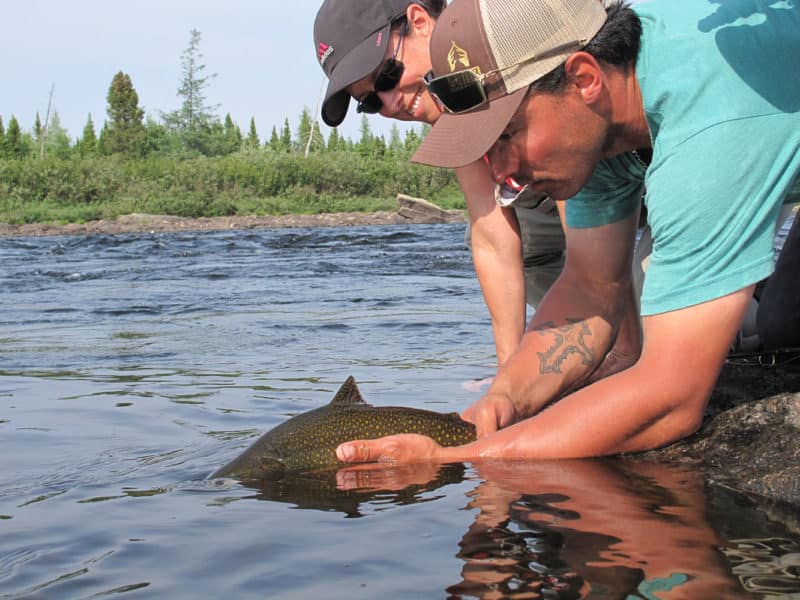Technique

Catch and release fishing
Catch and release (or non-retention) is actually a widespread technique used by anglers. Why? For many reasons, actually, such as compliance to a fishing regulation, concern for conservation… Or for a simple distaste for fish.
What is it?
Catch and release simply means that the angler releases his or her catch in conditions that will allow it to survive.
A few simple precautions and the application of sound release practices (in French only) will greatly reduce the risk of injury. Because, let’s face it, a fish that suffers a deep wound and bleeds profusely is often unlikely to survive.
Tips
- Do you plan on releasing your fish? If so, cut or flatten the barbs (the sharp tips) from the hook using pliers to prevent serious injuries to the fish.
- Limit the struggling time by adapting your equipment to the targeted species.
- Use wet hands to handle the fish, or handle it directly in the water. This will protect its skin and the mucus covering it.
- Use a landing net made of rubber or of small, knotless mesh to get the fish out of the water.
- Handle the fish carefully for as little time as possible. Do not touch its eyes or gills.
- If a hook is stuck too deep in the fish’s throat and cannot be retrieved, leave it there by cutting the fishing line right above the hook. The fish will eat and digest the hook, and its injury will heal. This solution is better for the fish than a fatal injury.
- Make sure that the released fish is in good shape and is still capable of swimming.
Learn more
Watch the video La remise à l’eau (in French only) by Cyril Chauquet, produced by the Fédération québécoise des chasseurs et pêcheurs.
Consult the Sport Fishing Regulations for more information on releasing fish.

